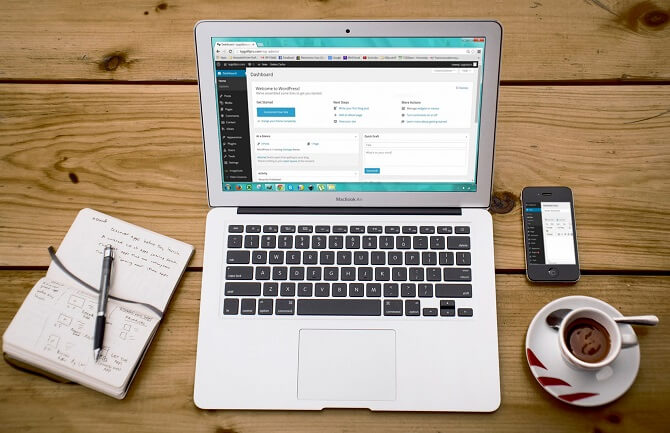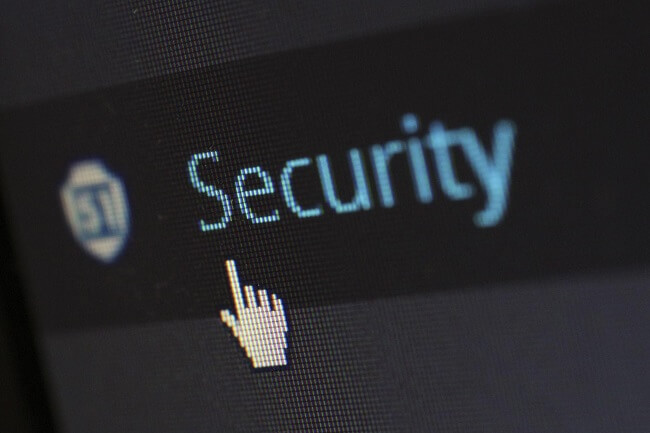WordPress has become one of the world’s most popular content management solutions. From the wide range of plug-ins to easy accessibility, it’s not hard to see why.
However, WordPress is not without its faults, and one area you need to pay significant attention to is security. Below, we will explain more about WordPress’s security flaws and the preventative measures you need to take.
What is WordPress?
It is a free and open source content management platform none of us are unfamiliar with given that WordPress powers 43% of all websites in existence today. In the CMS market, in particular, WordPress has a 60.8% market share. Their balance between functionality limits, or lack thereof, and developer experience is unmatched. However, throughout the year, we have seen WordPress hit the spotlight for different reasons. Cyber Attacks!
Cybersecurity in Digital Marketing is crucial. An attack on a site could leave it inoperable for days. It can set you back years from an SEO point of view. Most of all, it can leave your customers and partner’s personal information at risk. With that being said, read on to discover more about the importance of WordPress security.
Why Do Websites Get Hacked?
Based on the indicators of compromise (IoC), roughly 12 million sites show hacking attempts based on this article from ithemes.com. The question is, why!
There is no shortage of answers to the question of why, however, there are a few reasons that are safe to assume are the dominate reasonings.
- The most malicious of them all is of course data theft. Just take a moment to consider the amount of extremely sensitive data you passed through your computer. Social Security information, credit card numbers, banking information, personal photos, etc. Imagine all your most sensitive data being held in the hands of someone you don’t know. We’ve seen data like this used for sale on the dark web, used for identity theft, and even national security in the case of Hillary Clinton’s emails.
- Besides the obvious data theft, there are some less disruptive reasonings to hack a website. One of the most common is forced promotion. Imagine you have a website that gets 5,000 users a day. The idea of reaching an audience of 5,000 daily without paying for ads may be tempting to some, hence why you see forced promotion breaches regularly. This can occur in many forms: embedded links, redirecting navigation links, or even as simple as a side bar for photos of products (which are typically not products you want on your site).
- Another common reasoning could be to attack competition. There have been sites that have been spammed, destroyed, and servers crashed. Even with backups in place, this could hurt your brand’s reputation, SEO, and ultimately your business as a whole.
Is Your WordPress Site Secure?
Most people would say yes confidently as they have never had an issue before, until you get that 3am panicked call notifying you otherwise. That was the situation for over 322 WordPress site developers and store owners in May when malware was uploaded to populate a fake reCaptcha field. The attack led end users to spam sites mined with malware and ads.
There are an infinite amount of reasons behind an attack. Some are more malicious than others, but all have one thing in common. None of them are good for your site!
Why do WordPress websites get hacked?
Sucuri, a multi-platform security business, has indicated that a 83% of the infected websites they work on are WordPress websites. Of course, we must remember that the sheer popularity of WordPress and the huge WordPress market share attributes to this figure. However, there are some clear vulnerabilities that are leaving the doors open for hackers.
Only last year, GoDaddy revealed that 1.2 million WordPress customers had their data exposed due to unauthorized access on the GoDaddy servers, which power a huge number of WordPress websites. Customers had their customer numbers, email addresses, database usernames and passwords exposed.
Types of WordPress security vulnerabilities
The main vulnerabilities are as follows:
- Denial of Service – Denial of Service (DoS) vulnerability exploits bugs and mistakes in the code to overwhelm the memory of your site’s operating system.
- Cross-Site Scripting (XSS) – This involves injecting a malicious script into a trusted application or website. The attacker utilizes this to send malicious code, usually browser-side scripts, to the end user without them realizing.
- Malicious Redirects – Malicious redirects involve creating backdoors in WordPress installations using wp-admin, SFTP, and FTP and other protocols, and they then inject redirection does into the site.
- Brute-Force Login Attempts – Brute-force login attempts involve using automated scripts to exploit poor passwords and gain access to your website.
- Pharma Attacks – This approach involves inserting rogue code in outdated WordPress plugins and websites, causing search engines to return ads for pharmaceutical items whenever a compromised site is searched for.
- Backdoors – Finally, this vulnerability gives hackers hidden passages, which means they can bypass security encryption to get access to websites powered with WordPress. They use abnormal methods, such as FTP and wp-Admin. Once a hacker has access, they wreak havoc on hosting servers with cross-site contamination attacks.
Time to be proactive!
You don’t wait to insure your home until a tree falls on it. You don’t wait to insure your car until you’ve put a dent in your bumper. Why would your brand’s window to the world be any different?
In this article, I’m going to walk you through what we call, “The low hanging fruit” of site security. This WordPress security checklist will allow you to get the most return for your time on site security. However, before you get started, I recommend that you run a malware check on your site to address any preexisting issues. You can find a tool here that works for your site’s unique needs.
Once you confirm your site is in good health, it’s time to move on to the WordPress Security Checklist! Read on to discover some top WordPress security tips.
Step 1: Keep WordPress Up to Date
Update, and I cannot stress this enough, WordPress!!
WordPress is consistently patching bugs and vulnerabilities within their CMS. They address reported vulnerabilities very seriously and allocate ample resources to create the most secure platform possible.
This is a relatively simple step that will make your site significantly more secure. And the best part. IT WILL COST YOU NOTHING! Updates are included with agreement with WordPress!
In addition, this step can help with site speed and compatibility with your plugins.
You can find the most current version of WordPress via their website. Always remember to back up your site before an update!

Step 2: Keep Plugins Up to Date
This step is arguably the most important. We see a large majority of attacks occur due to 3rd party plugins. Many of these plugins have code lying in the core of your website. For hackers, this presents itself as an opportunity.
Just as WordPress’s team is consistently addressing reported vulnerabilities, the teams for more popular plugins are as well.
Keep your plugins up to date! Like always, remember to back up your site before updating!
Step 3: Keep Your SSL Certificate Up to Date
SSL Certificates allow for sensitive data to be transferred securely. This would include social security numbers, credit cards, login credentials, and more!
You can purchase SSL Certificates through most domain providers and hosting providers. In recent years, we’ve seen a shift to free certificates with many platforms.
Plus, with many browsers, we see website block screens for sites without a secure certificate!
Step 4: Admin Login Credentials
Obviously, the easiest way to your site’s backend is the /admin URL. We see ramming attempts, guessing, and more via the admin login page. The easiest way to limit the threat of these attacks can be done straight from the “Users” page on WordPress!
- Turn on 2 factor identification for admin login
- Use the generated passwords that WordPress provides as recurring passwords may have been leaked
- Reset passwords every 2-4 weeks
Step 5: Utilize the reCaptcha Plugin
The reCaptcha Plugin is a free tool developed by Google to limit bot’s ability to advance on site’s sensitive areas. It asks you to click on pictures of buses, type the blurry numbers, or any other number of tasks only a human can perform.
This prevents bots from ramming the site to exploit any vulnerabilities.
Important WordPress Security Plugins
Some of the best security plugins for WordPress are as follows:
- Google Authenticator – This plugin enables you to set up multi-factor authentication, enabling you to add an extra security layer to your website.
- BulletProof Security – You get some basic security features for free with this tool. We wouldn’t rely on it alone, but it’s worth adding to your dashboard. Features include log-in protection and malware scanning.
- WPScan – This is an effective tool that catalogs a wide number of known threats, reporting the important ones to you so that you can take action.
- iThemes Security Pro – iThemes Security Pro delivers a wide range of tools to secure your website, including locking out suspicious IPs, scheduled WordPress backups, 404 detection and plugin scans, powerful password enforcement, and two-factor authentication.
- Sucuri – Finally, we have Sucuri, which is an all-in-one solution that you can set-up in your WordPress dashboard. It will clean up your website and you can carry out file integrity monitoring and implement Web Application Firewall (WAF) protection.
How to secure your WordPress site without a plugin
- Use SSL – Implement a Secure Socket Layer certificate, otherwise known as SSL. this will ensure that all of the data transferred between the server and the user browser is secure and encrypted.
- Change your login URL – Your WordPress login is automatically ‘wp-admin’ or ‘wp-login’ added to your WordPress URL. You should change this to something that’s not so easy to guess so that hackers cannot find your login page.
- Use two-factor authentication – You should use multi-factor authentication at the log-in stage to ensure that users need more than a password to access your WordPress site.
- Protect the wp-config.php file – This file holds critical data about your WordPress installation, making it the most vital file in your website’s root directory. If you protect it, you make it incredibly challgning for hackers to breach your website, as they cannot access the wp-config.php file.
- Update to the latest version of WordPress – If WordPress has been updated, it means that potential security flaws have been addressed and vulnerabilities have been patched up. If you don’t update your website quickly, you’re leaving your website exposed.
- Choose a reliable host – Only ever work with high-qualtiy, trustworthy, hosting providers. Take your time to assess your options carefully.
Final Thoughts On The Importance Of WordPress Security
It is the responsibility of site administrators to ensure that data kept is going to be safe. It is worth time and effort to ensure that. All these steps above will take you no more than 1 day.
If you need help with any of this or would like to take security measures a step further, you’re welcome to reach out to us!





Tell us your thoughts in the comments